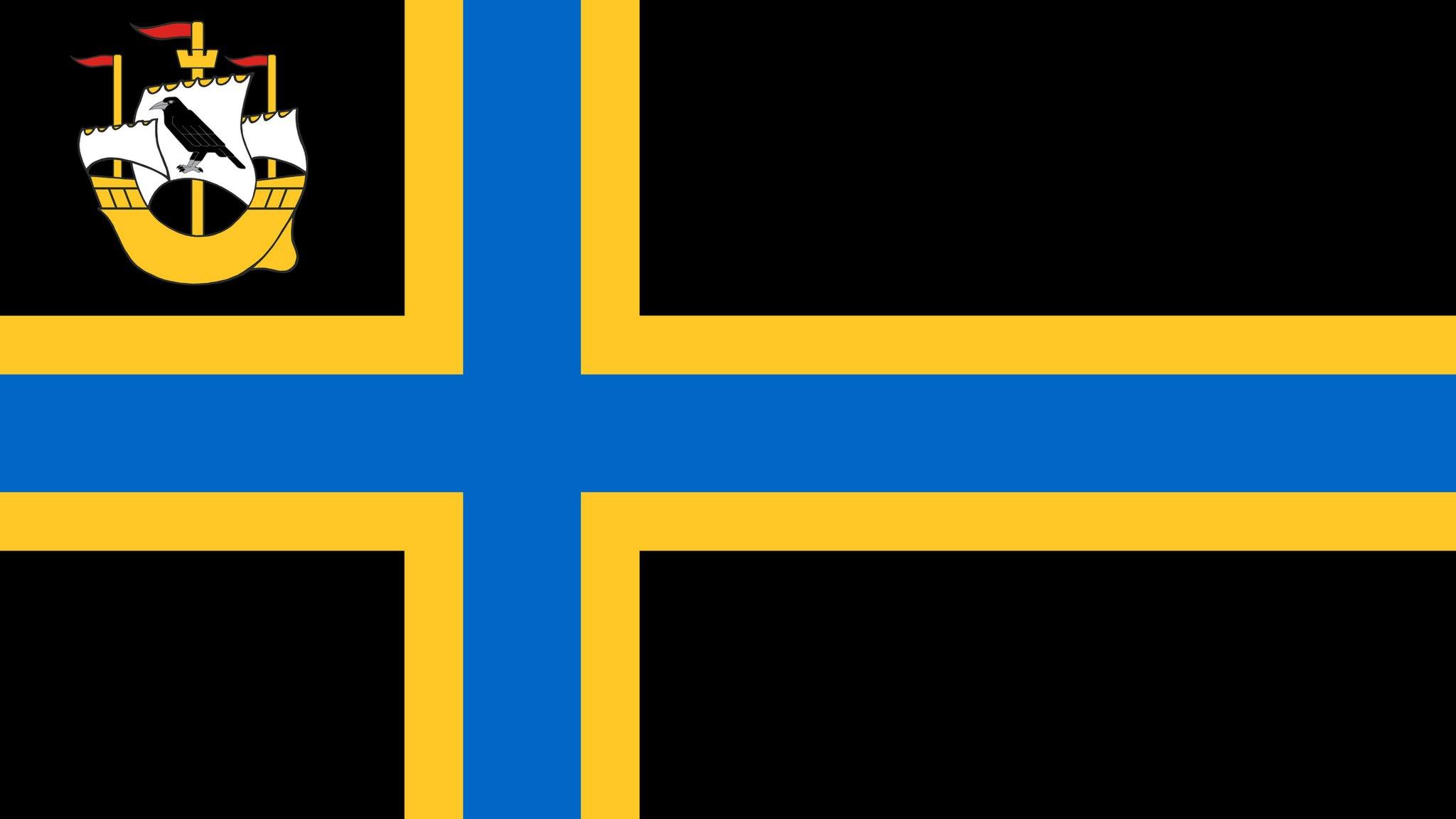The places in Scotland with their own flags
- Published
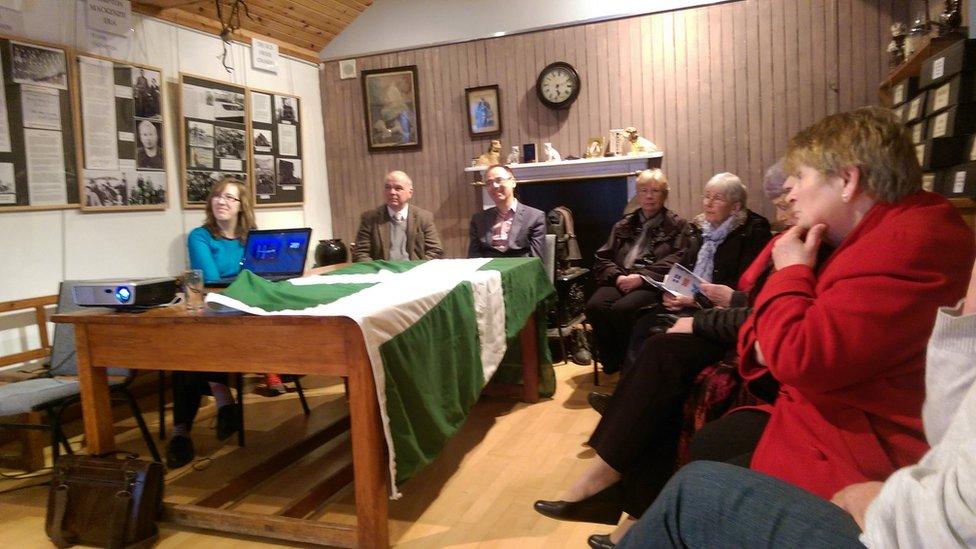
A public meeting during the campaign to have the Isle of Barra's flag officially recognised
With the Isle of Barra securing official recognition of its flag, where else in Scotland is represented by its own banner?
One of Scotland's oldest locality-specific flags can be found fluttering above the roof tops of Edinburgh.
Auld Reekie's city flag with its castle and colours of white, black, red dates back to 1732.
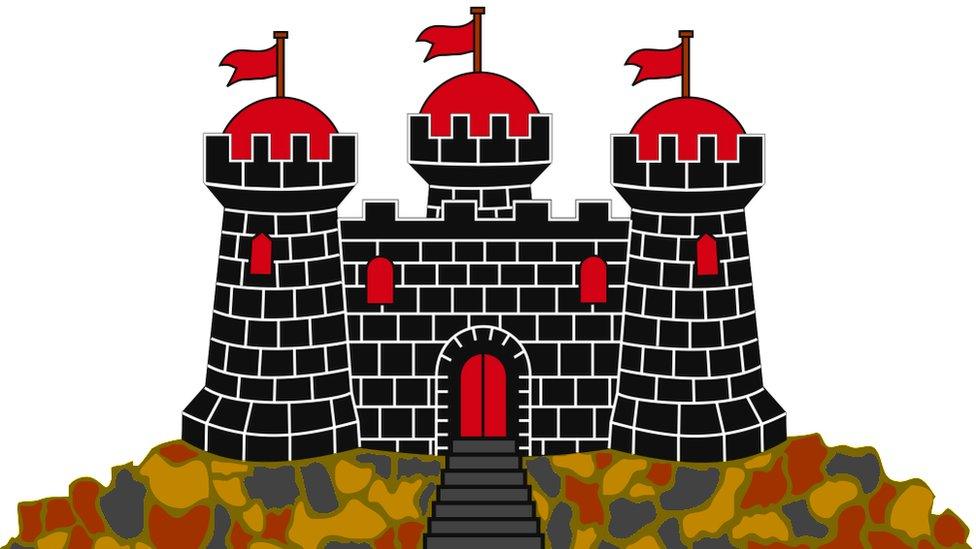
Edinburgh's city flag
There are also what are known as county and regional flags flying across Scotland.
Shetland's was designed in 1969 to commemorate the 500th anniversary of the transfer of Shetland from Norway to Scotland.
The colours were inspired by Scotland's national flag, and the cross shape is from Scandinavian tradition.
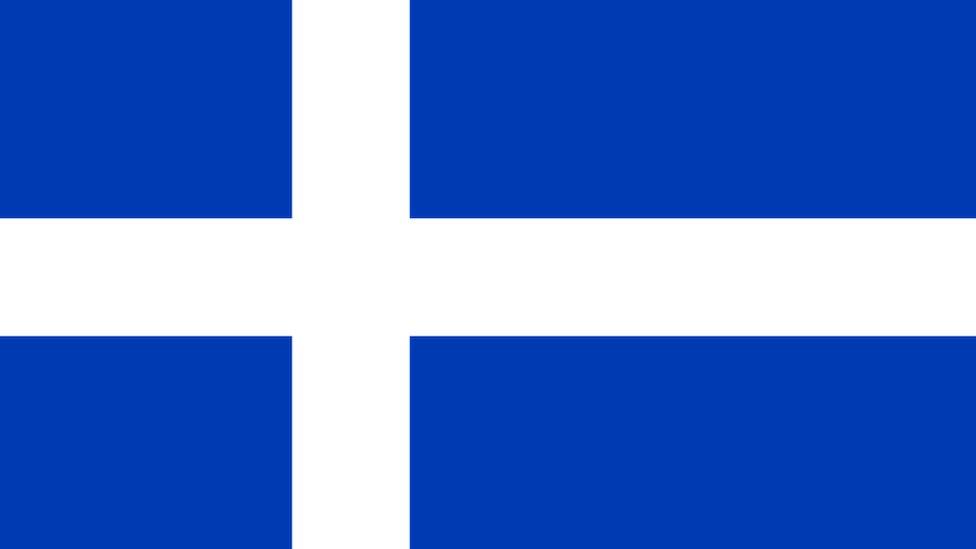
Shetland's flag was designed to recognise the islands' Scottish and Norwegian links
Orkney's flag was designed by postman Duncan Tullock, who sketched out his initial idea using his young grandchildren's crayons. The flag secured official recognition 10 years ago.
Mr Tullock's blue, yellow and red design was voted the best of 100 designs submitted to the islands' council.
It replaced an older flag, the red and yellow cross of St Magnus. It was considered to be too similar to other national banners.
The postie's flag retained the red and yellow colours of the original flag, and had a blue cross to represent Scotland and the sea.
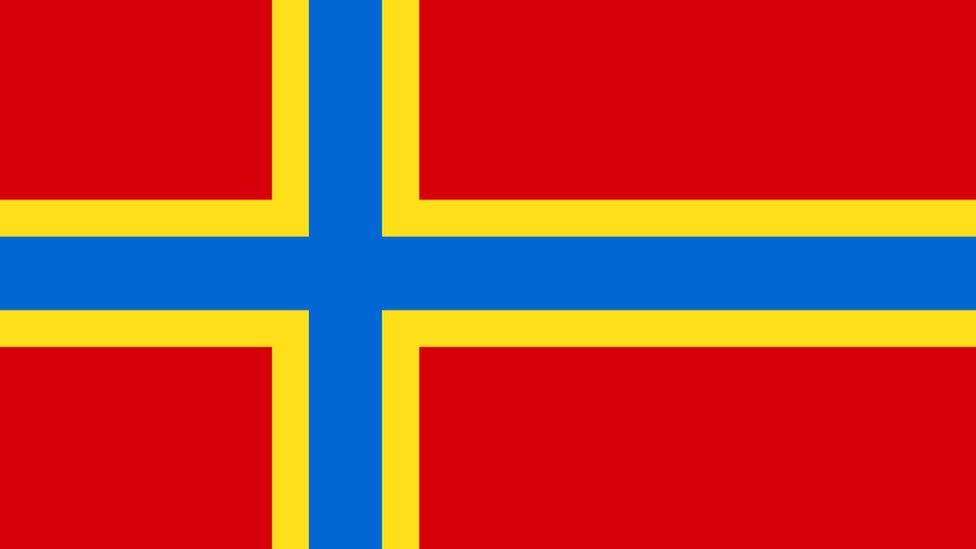
Initially an idea sketched out in crayons, Orkney's colourful flag
More recent times have seen a flurry of new county and regional flags unfurling.
Last year, a flag was chosen for Caithness.
It features a Nordic cross and galley symbolising Caithness' ancient ties to the Vikings.
The design was picked from suggestions sent to Highland Council from all over the world.
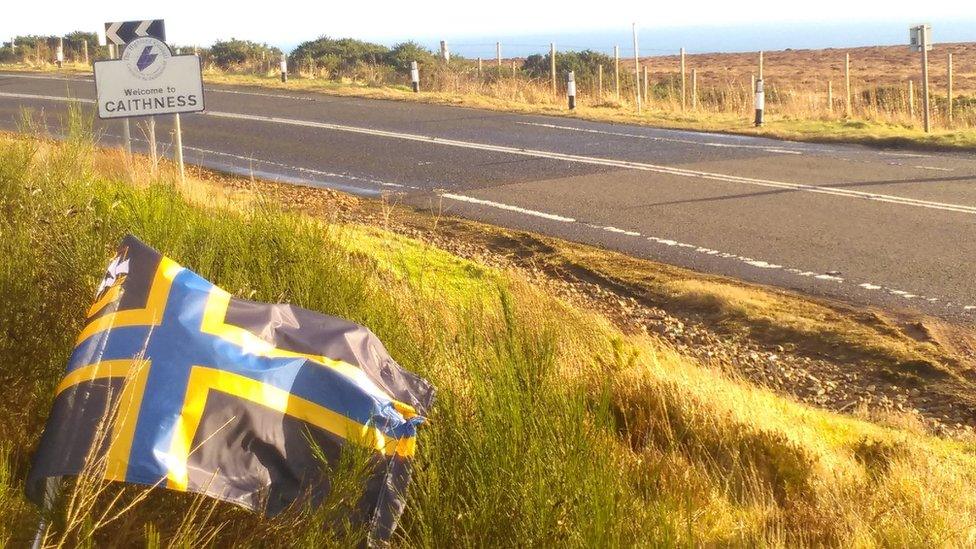
People from all over the world offered suggestions for the design of a flag for Caithness


The unveiling of Caithness' flag
Also running up flag poles in 2016 were a banner for Kirkcudbrightshire and one for Denny and Dunipace in Stirlingshire.
The Kirkcudbrightshire flag was organised to mark the Queen's 90th birthday.
The green and white quarters reference the checks that appeared on a former local authority's coat of arms, and also the checked cloth used historically to count taxes by the Stewards of the Lords of Galloway.
It also features a St Cuthbert's cross to reference the origin of the name Kirkcudbrightshire as the "shire of the church of Cuthbert".

Kirkcudbrightshire's flag
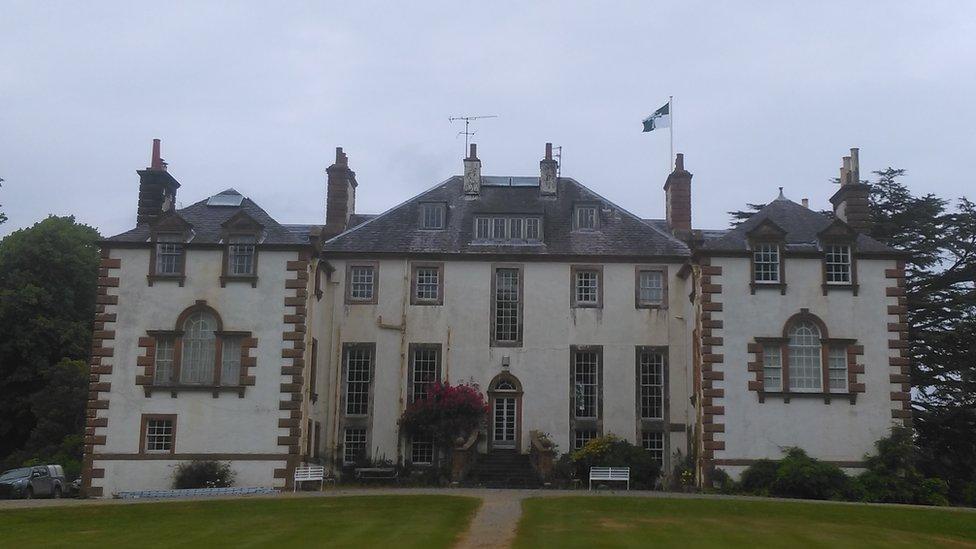
Kirkcudbrightshire's flag flying
Denny and Dunipace's town flag shows the River Carron as wavy lines. Dunipace is on the river's north bank and Denny on its south.
The castle symbolises the name of the River Carron as possibly originating from "Caer Avon" meaning "River of Forts", while the two towers recall the settlements of Denny and Dunipace.
The flag's 11 pointed star represents 11 mills that were operating in the area in the mid 18th Century.
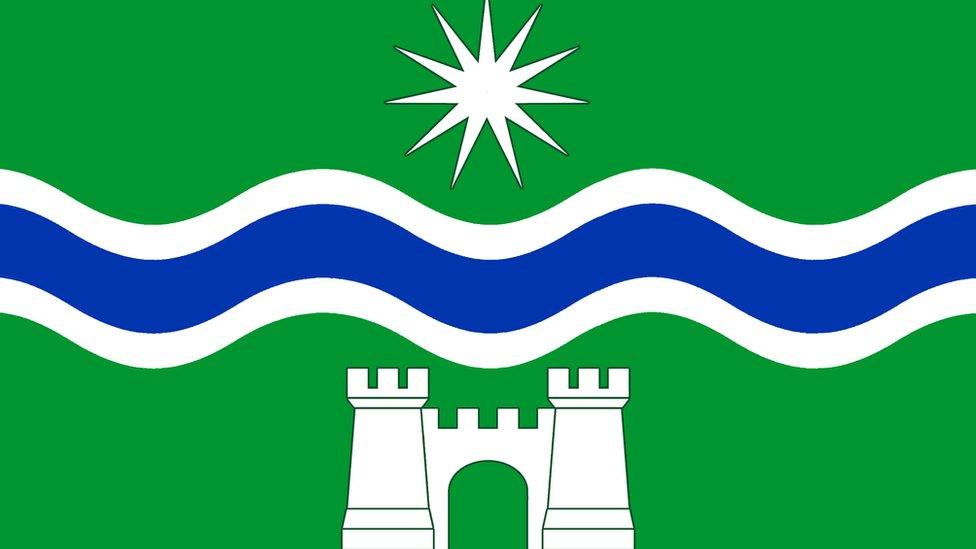
Denny and Dunipace's town flag
In the Western Isles, South Uist secured official recognition for its banner in May this year.
It has a Nordic cross in the pattern of Norway's flag.
Donnie Steele, a former councillor, championed South Uist's flag, organising a petition to gather support for official recognition.
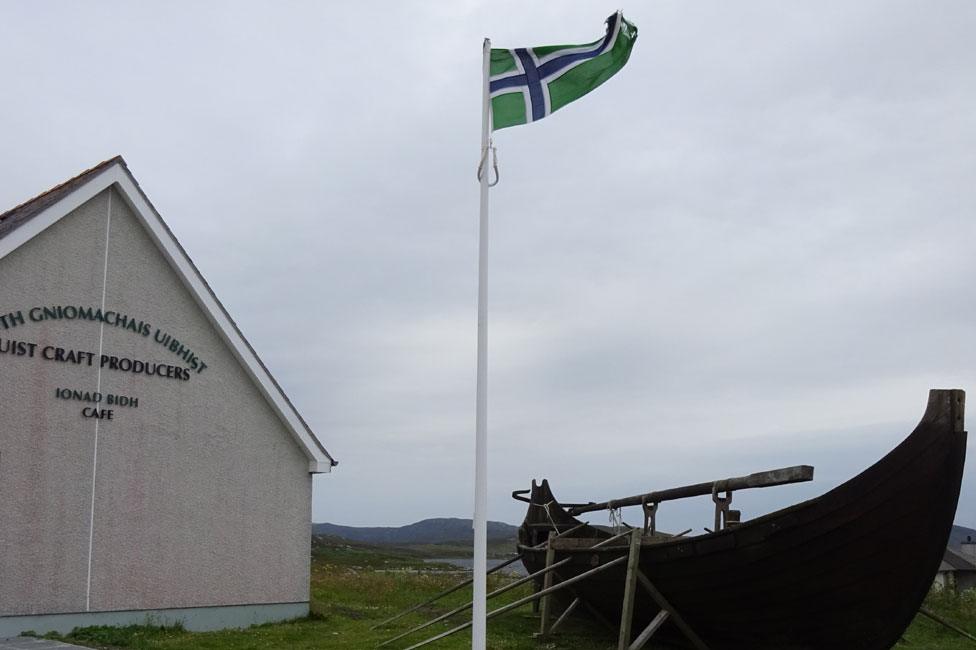
South Uist was the first island in the Western Isles to have its flag officially recognised
The Flag Institute, the UK's national flag charity, works with communities seeking recognition from the Court of the Lyon Court for flags.
Philip Tibbetts, of the institute, said towns, cities and smaller communities want flags as a way of displaying, and also preserving, the individual identities of areas.
He described Scotland and the wider UK as a "patchwork" of these individual identities.
"There has been an explosion of interest in flags," said Mr Tibbetts. "Interest in Scotland is really snowballing."
He said the Court of the Lyon Court, which certifies flags, has also recognised this growing interest in flags for specific areas.
Mr Tibbetts said Sutherland in the Highlands and the Isle in the Tiree in Argyll were among places currently working on projects to have their own flags.
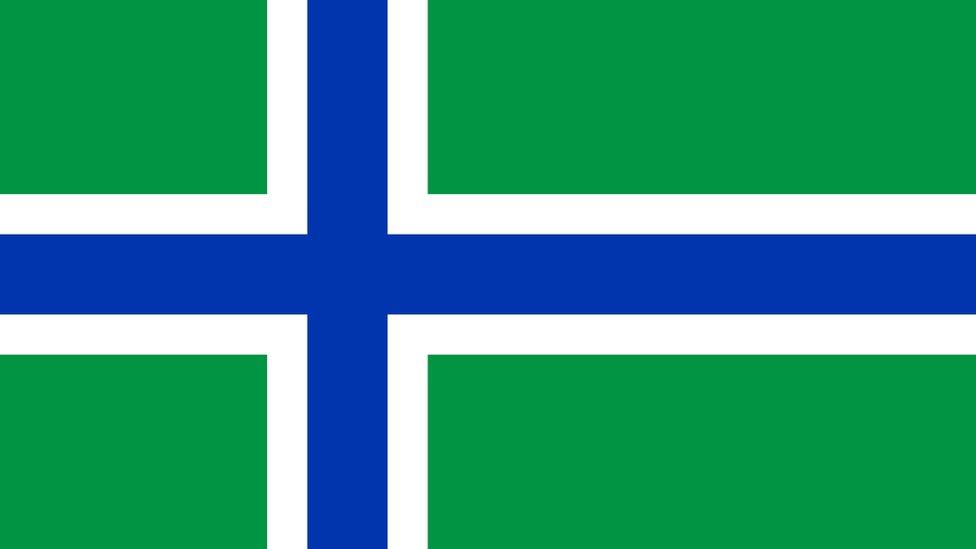
South Uist's flag
- Published23 November 2017
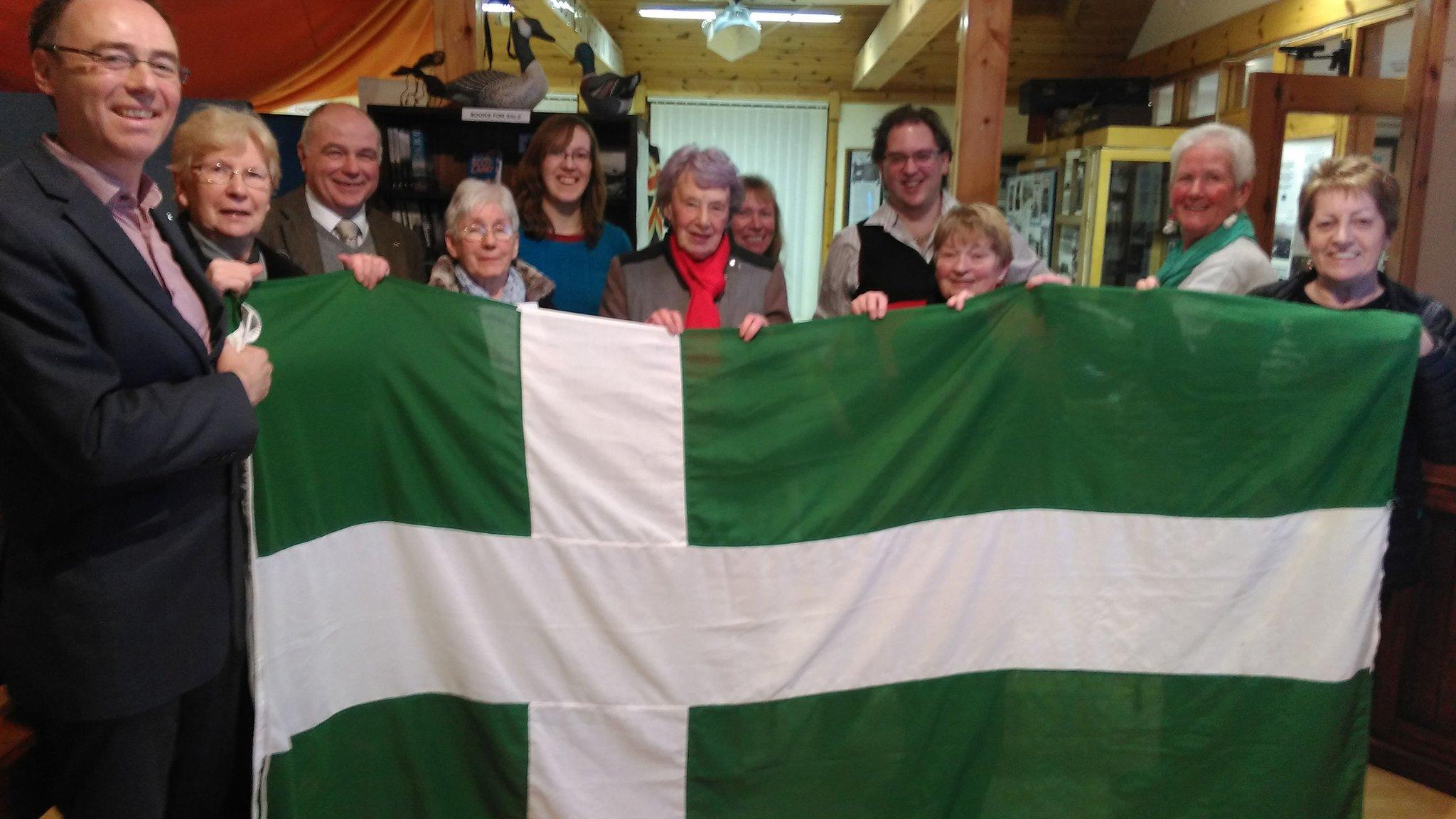
- Published26 January 2016
